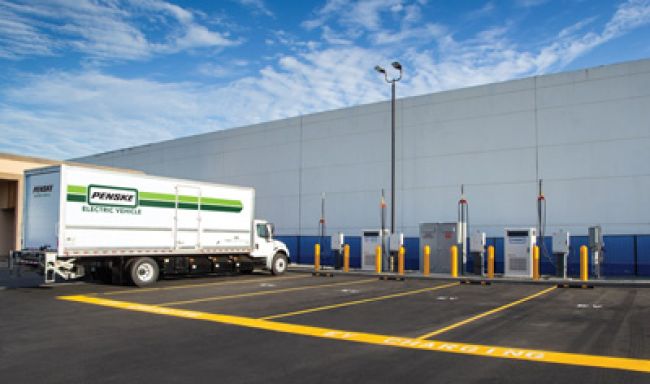
EV Decision-Making: Telematics to the Rescue
A utility fleet manager who is considering integrating electric vehicles into their operation faces a range of questions, including how telematics data will be tapped when running a mix of trucks powered by either internal combustion engines or electric drivetrains.
In other words, will it be difficult to blend the data streams from these two vehicle types to continue conducting a singular equipment analysis to gain overall fleet cost/performance insights? Or will the information gleaned from the two fleet segments have to be analyzed separately? Further, is analytical software sophisticated enough to present integrated data for the whole fleet as well as separated by power source?
Tracking brake cost and performance is just one example of this conundrum. If brake wear is less on EVs, thanks to regenerative braking, would the fleet have to analyze EV and ICE brake system separately?
In a recent interview with UFP, Chris Hough, vice president of maintenance design and engineering for Penske Truck Leasing (www.pensketruckleasing.com), offered his perspective. A nationwide truck lessor, Penske is a recognized hands-on leader of fleet electrification in the trucking industry.
Hurdles Ahead
“The integration of electric vehicles, like any other new technology, poses hurdles and challenges,” Hough explained. “New technologies require a different approach and methodologies for successful integration. Telematics and data are ever increasingly more crucial to operating a successful and efficient business.”
He said that Penske is “soundly aware” of the importance of operating an efficient business, and so it continues to make advancements in data collection. “We continue to leverage strong relationships with our OEM and telematics partners to improve the quality and accuracy of telematics data.”
Bearing down on how telematics will play out in a fleet containing EVs, Hough said that “measurements and criteria continue to be developed and vetted before they can be successfully blended with traditional ICE-powered vehicles, so the overall pool is not skewed adversely.”
He added that what makes that possible to begin with is that “every vehicle and transponder ID is mapped, and the data repository storing the data identifies the source vehicle clearly,” regardless of power source.
With that issue resolved, fleet managers might also consider tapping telematics data and analytical software to help them make the decision to go electric in the first place, as well as to help sell the idea to upper management and develop a strategic rollout plan.
Telematics Talks
Such was the case at New Brunswick Power Corp., the primary electric utility in the province of New Brunswick, Canada, as well as a supplier of electricity to other provinces and to New England states.
When NB Power sought to build a business case and strategy for the migration of light-duty vehicles to electric power, the scope of the project had to include several municipal governments and a strategic partner, the New Brunswick Department of Transportation and Infrastructure.
The initiative, dubbed Shift Your Ride, evaluated the suitability of light-duty EVs and undertook a fleet review to help the different municipalities determine a business case for integrating EVs into their fleets.
NB Power needed to understand the benefits of potential cost savings on a per-vehicle basis and obtain realistic fleet-wide estimates on fuel consumption and reductions of greenhouse gas emissions, according to Geotab (www.geotab.com), a provider of online fleet management systems and services, including data-driven electric vehicle suitability assessments (EVSAs).
Geotab describes its EVSA as a “blueprint for fleet electrification” as it analyzes a fleet’s unique driving profiles and patterns to identify those vehicles best suited for EV replacement. Recommendations also take into account EV availability in the local market, EV performance in extreme weather and financials related to procuring EVs. The goal is to arrive at a total cost of EV ownership, including the potential cost savings of switching to EVs.
In NB Power’s case, a series of assessments were performed for the utility and its municipal partners across New Brunswick.
Per Geotab, those EVSAs proved critical to the success of the initiative by providing:
- A detailed account of vehicle usage on a day-to-day basis via remote data collection.
- The capability of various EV models to service existing driving cycles.
- The efficiency and operational cost savings of various EV models for the observed duty cycles.
- The best assignment of available vehicle models to duty cycle requirements.
- An accounting of the total cost, cost savings and return on investment per vehicle and for the total fleet.
- A calculation of the total reduction in fuel consumption and greenhouse gas emissions.
All that critical information was captured by telematics devices that record and transmit vehicle driving behavior to sample vehicle fleet duty cycles accurately. Geotab explained that the collected data was “fed into a patented physics-based electric vehicle modeling software, which made it possible to evaluate the feasibility of electric vehicle adoption based on real-world driving data.”
Big Picture
Through the assessment process, NB Power determined there was potential for a 94% reduction of greenhouse gas emissions and a fleet-wide savings of over $1 million CAD.
Highlights of the results included the following (*over a vehicle’s typical seven-year service life):
- 94% of the vehicle duty cycles could be met by the charging time spans of best-matched EVs.
- 91% of the vehicle range requirements could be met by best-matched EVs.
- Potential 95% reduction in fuel consumption*.
- Reduction in greenhouse gas emissions of 94% (2,123,710 kg of CO2)*.
- Per vehicle savings estimate of $11,735 CAD*.
- Potential fleet-wide savings estimate of $1,091,298 CAD*.
It could be said that fleet telematics and EV integration go hand in hand – before, during and long after the integration of EVs into a utility fleet.
About the Author: David Cullen is an award-winning journalist who specializes in covering the trucking industry. Based in Connecticut, he writes for several business publications.

